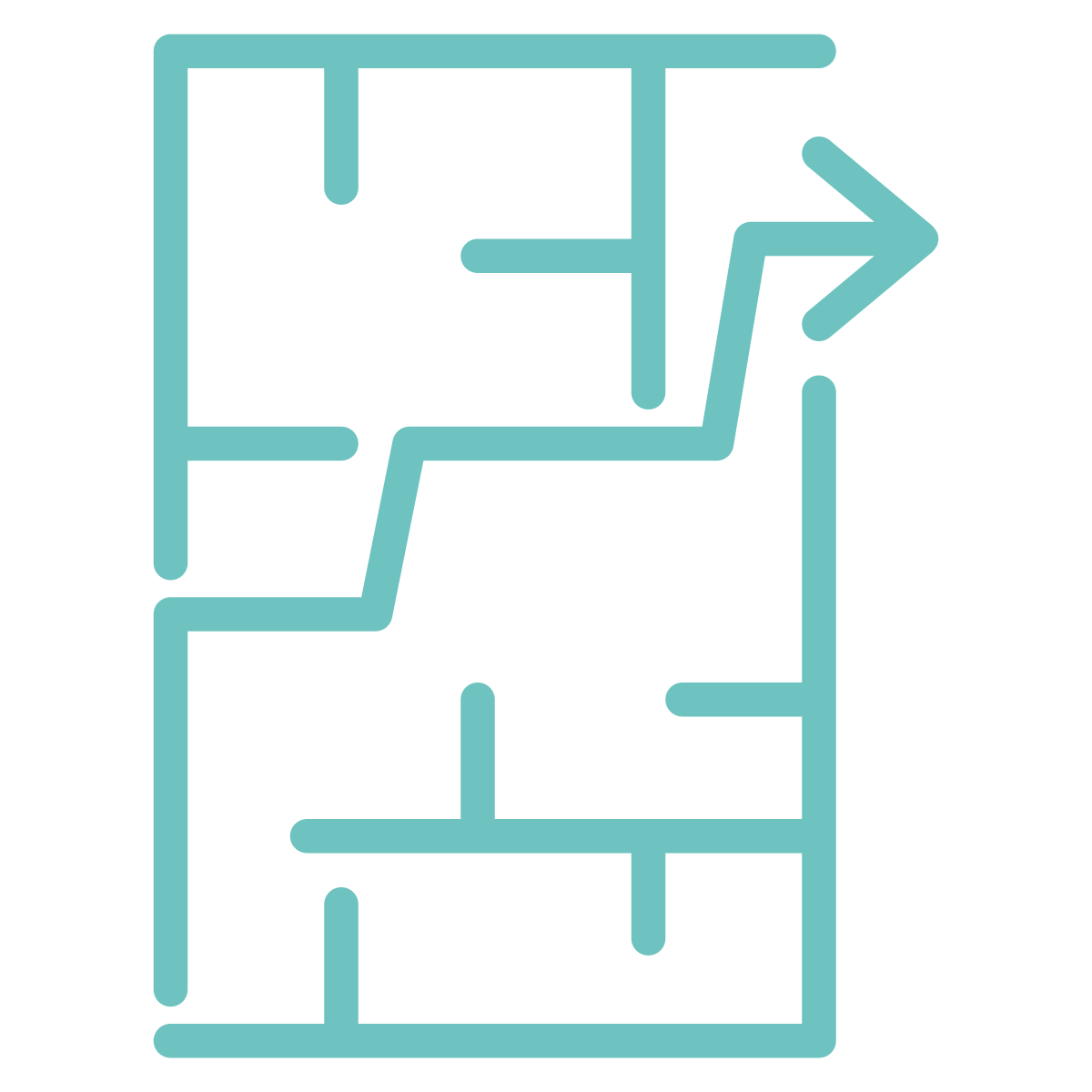One of my favorite quotes comes from Pirkei Avot (4:1):
Ben Zoma said: Who is wise? The one who learns from every person.
If we think about this concept more deeply, we know that it could be extended. If we push further, it means that each and everything we encounter can teach us something.
I love design.
I read about it, watch videos about it, and get inspired by it. And one thing I’ve paid attention to over the years is video game design. Not because I particularly love video games or anything, but because it is an increasingly large part of how we interact with each other as well as the great storytelling and art. Think about how Wordle, a video game, took over the internet.

Game Maker’s Toolkit is a fantastic creator I’ve watched for years who does deep dives into the ideas that make games. He discusses movement, what makes for a good puzzle, and what does it mean to embody a character at all? It can get really philosophical. In one series, he discusses the design of the dungeons in Legend of Zelda games.
Without going any deeper into the videos, you can watch them if you want, I did want to draw out a few concepts that I think are useful to us, and in particular, on the idea:
Making congregational life more engaging.
I want to identify a few core elements and understand how they connect to congregational life:
- Heroes with narratives are our members, each with their own stories and desires. Everyone who walks into a congregation is on a journey.
- Rooms to explore are the growth opportunities and experiences our people face. Some rooms are locked and full of puzzles and challenges. The heroes will need to find keys which are the personal encounters people have. Imagine every lecture, text class, activity, and prayer service as a room on the journey through the game.
- Items and skills acquired along the way are the knowledge we collect. We build trust (internally and externally), understand how to utilize the resources in the congregation, and grow deeper relationships. These are the things our people learn. They learn about themselves, like confidence and beliefs, but also the very practical skills of being an engaged Jew in a congregation.
- Rewards to collect are the successes that make us feel connected. They are the powerful prayer experiences, great learning, and new friendships. These are the feelings that make us want to continue the journey.
- The Big Boss is the big emotional needs our people have like the sense of belonging, the attachment to others, and the desire to live a meaningful Jewish life with others.
Each of these elements, individually and together, can teach us about congregational engagement. So what lessons can we learn?

Learning to play is not intuitive. We need congregational tutorials.
When you start playing a new game, even a board game, you have to learn the rules and how to play. Most video games start with a tutorial. How to move and how to act within the structure of the game.
Congregations have none of that.
Many people have no idea how to navigate a congregation. I don’t just mean prayer services, although they are a big culprit, but basic congregational stuff. How do I get the emails? How do I know if the activity is a good fit for me? How do I pay my dues? How do I plan something if I have an idea?
Congregational life can be opaque. We need to create tutorials to train people on how to engage with congregations. Tutorials can be boring, so we have to be thoughtful about how people learn to be a part of the community.
- Have a Frequently Asked Questions document on your website or in the first email people get.
- Task someone on the team, lay and staff, to help people get situated in their first six months.
- Describe the core audience for each program. (There is no such thing as everyone, really.)

Every hero is different. We need many paths.
We are each attracted to different parts of a game. Some folks like strategy, some prefer puzzles, while others just like to explore. All of these approaches are reasonable and desirable.
Congregations often presume everyone is the same.
By creating different pathways through the congregation, we can empower people to engage in the parts of the community that make the most sense to them.
Perhaps someone really likes learning but finds prayer too challenging or uninteresting. Someone else might love singing at prayer services but finds lectures boring. Another person might love meeting new people during social activities within a Jewish context but doesn’t find the Tradition itself, particularly engaging right now.
Each of these is reasonable and exists in your community. How are you helping them find a pathway through your congregation?
- Make the pathways explicit and map out how different people might grow from event to event.
- Don’t assume that each person can or should go to everything.
- Craft programs for different types of people.

It can be hard to level up. We need clear growth opportunities.
In many video games, but not all, we can improve our abilities by taking on new challenges and leveling up. It is not always easy, it takes time and patience. Unlike in congregational life, there is a little counter that tells you how close you are to the next level. As you progress, those leveling-up opportunities get further and further apart.
Congregations don’t offer clear ways to grow.
Let’s be honest, congregations are usually hard to engage with from the beginning. And if you want to grow and improve something, receiving resistance is a regular occurrence. As we look at boards and other leaders, we have to ask, how did they get there? How can we help other people grow into, not just congregational leaders, but better humans?
Congregations offer so many possibilities for their members to learn new skills, make connections, and make a difference. We can be thoughtful in helping people expand their horizons.
- We can make a guidebook on how the congregation has historically done things so that they can help future leaders.
- We can list and empower people to learn small skills that they can apply quickly.
- Sharing stories about how people developed as human beings with the congregation.

Without little victories along the way, no one will make it to the end.
There is usually a major bad guy teased at the beginning of games to keep heroes focused to the end. However, if you had to just grind away until you reached that big bad guy, the game would be pretty boring. That is why games have little victories along the way with rewards to match. Each victory helps us level up and grow our skills, but more importantly, unravel the narrative and build our relationship with the game and its characters.
Congregations don’t offer any real rewards along the way.
Of course, there are the annual, “young leader” awards or “longest chair of the committee” awards. We can do this by not just increasing engagement with new member highlights, but thinking more deeply about what people want.
People want to feel respected and cared about. People want to feel like they belong to a community. Creating “victories” along the way that help people feel connected, loved, and empowered is what helps people stick around.
- New people can get buddies to sit with and help them make a friend. How amazing would it be if they walked away with a new friend or grew a friendship every time they came to a program?
- Get clear on what people want and need. Then plan programming and experiences around that. Think about deep human needs.
- Along with charting someone’s path through the congregation, plan how you can reward participants along the way.

Challenges are good and so is patience. Too much is a turn-off.
Games are boring if they are easy to beat. As a result, players have to cultivate patience. Everyone knows someone who has played a game for an entire afternoon to accomplish a single task. Why is that? In part because of the victories described above, but also because games, if they are good, are thinking about the right amount of challenge.
Congregations can be challenging until you are all the way in. Few make it this far.
In a thousands-year-old Tradition, there can’t be an expectation that everything can or should be easy. Things that are difficult are often worth the energy and effort to accomplish. Otherwise, if everything was easy, it would rarely be enjoyable. If we take stock at how congregations are constructed, they are extremely difficult at the beginning until you’re already bought in. Since most people don’t get that far, they don’t get to enjoy the ease.
How might we realign the difficulty curve to help people take on a challenge and know it will be worth it?
- We can make engaging easier by asking people to take on small, short-term roles instead of large, long-term roles.
- Sharing stories of people working through challenges and why it was a good thing can be a compelling story to tell.
- Reviewing all of the hoops people have to jump through and evaluating if they all make sense. Sometimes they do and sometimes they really don’t.
I believe in the idea of congregations.
They can help us come together, learn how to be neighbors and families, inspire us to help each other, and be a part of something bigger than ourselves.
We can make them better, more enjoyable, and encouraging places, I know it in my bones.
Maybe if there were more chests full of gold, we could attract new members?
